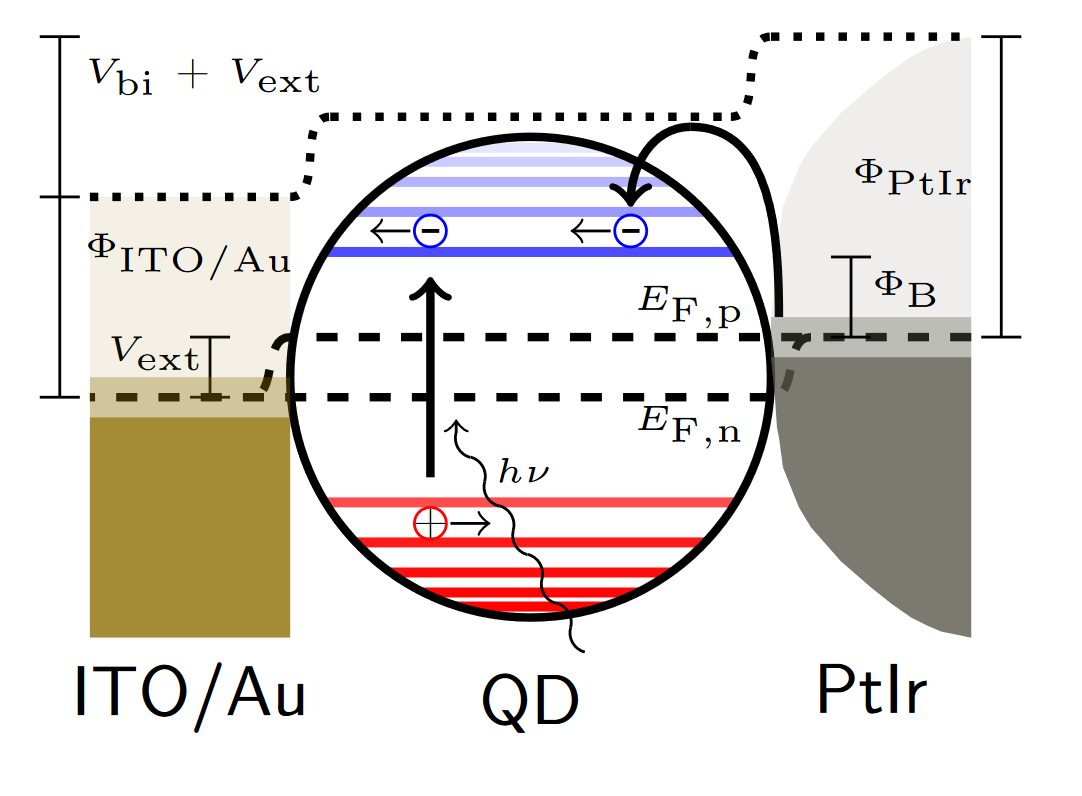With structure sizes of just a few nanometers, new optoelectronic components pose challenges for measurement technology that are not always easy to solve. Specifically, the Nanooptics team at the Physics Institute was faced with the challenge of measuring the light-generated charge current through semiconducting nanoparticles, so-called quantum dots. On the one hand, the photocurrent should be examined with a resolution of just a few, ideally individual quantum dots. On the other hand, their simultaneous microscopic imaging should enable a clear assignment of the current flow to the quantum dot arrangement.
The solution was found in atomic force microscopy, which uses the force between a nanoscopic silicon tip and a sample for microscopic imaging. If the tip is covered with a fine metallic coating, currents can also be measured. Together with highly sensitive amplifiers (for measuring currents down to the femtoampere range) and the optics necessary for excitation with light, the suitable experimental setup was found.
We examined lead sulfide nanoparticles with a diameter of 3.2 nanometers, coated with a one nanometer thick perovskite layer. These quantum dots, synthesized by the project partner at ETH Zurich, deliver efficient photocurrents, making them promising components for innovative photovoltaics and sensor concepts. In fact, measurements could be carried out on various substrates with a resolution of 1-3 quantum dots. In conjunction with computational modeling, it was possible to quantify the properties of the samples such as energetic barrier heights, field gradients and diffusion constants with previously unattainable precision.
These results enable the further miniaturization and optimization of quantum dot-based optoelectronics. However, they also establish the current-measuring atomic force microscope as a quantitative tool and recommend it for further applications.
F. Küstner, H. Ditlbacher, A. Hohenau, D. N. Dirin, M. Kovalenko, J. R. Krenn, Quantitative photocurrent scanning probe microscopy on PbS quantum dot monolayers, Nanoscale (2024), https://doi.org/10.1039/D4NR02575J
